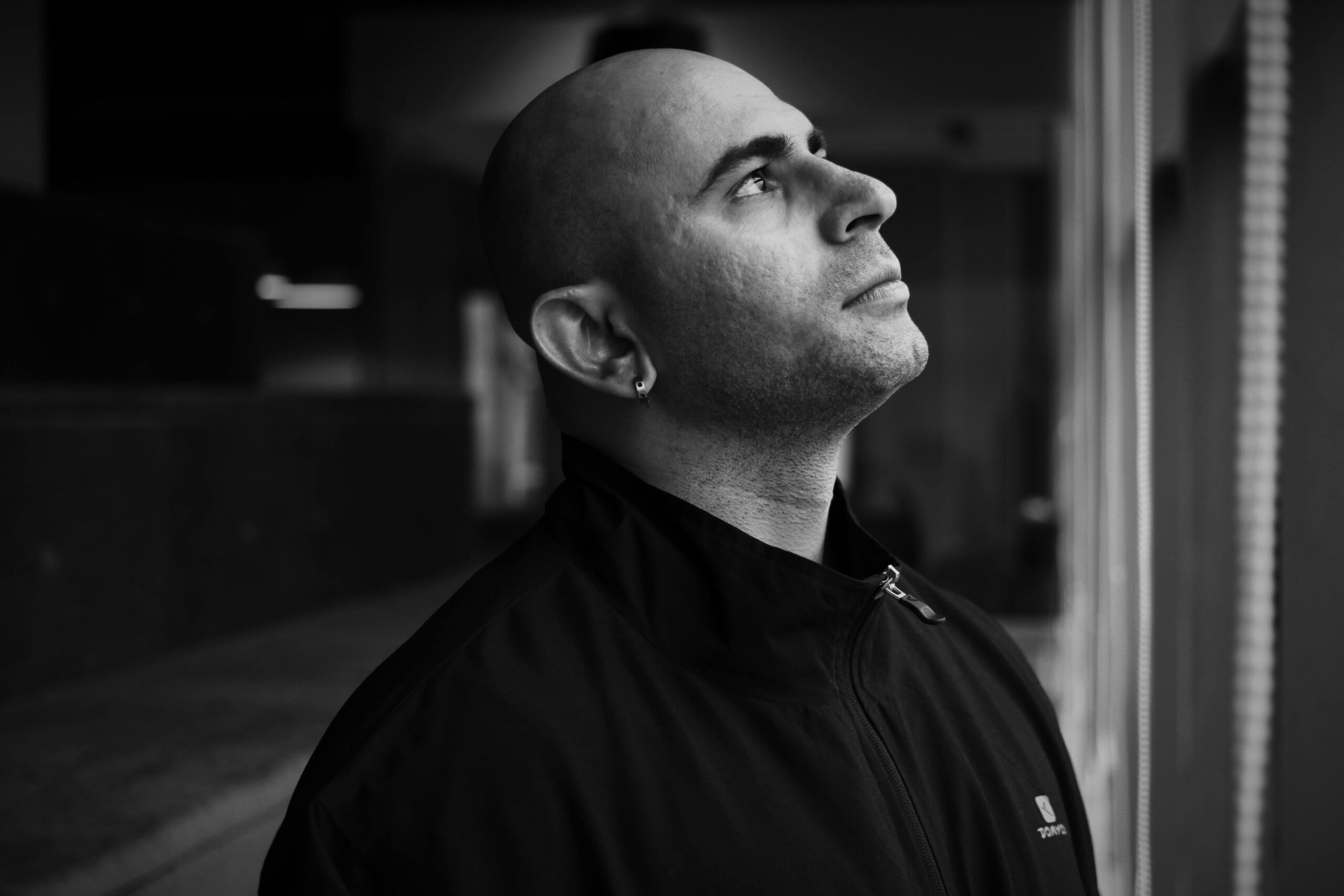
Can Neck Pain Cause Dizziness? Feeling like the room is tilting, your vision is lagging, or your body is moving even when you’re standing still can be unnerving—especially when it shows up alongside neck pain. If you’ve ever wondered, “Can neck pain cause dizziness?” the short answer is yes, it absolutely can. The long answer is more interesting: your upper neck isn’t just a stack of bones—it’s a precision-guided control center that syncs your brain, eyes, inner ears, posture, and blood flow. When that system slips out of alignment, dizziness, vertigo, headaches, facial pain, and even brain fog can follow.
At Lavender Family Chiropractic in Sarasota, Florida, our entire focus is the upper cervical spine—the atlas (C1) and axis (C2). We use 3D CBCT imaging and functional nervous system scans (Tytron) to locate subtle, often-missed misalignments that irritate nerves, distort balance signals, and contribute to symptoms like BPPV, MdDS, Meniere’s disease, PPPD, cervicalgia (neck pain), occipital neuralgia, trigeminal neuralgia, headaches, and more. Then we correct those misalignments with gentle, precise adjustments—without popping, twisting, or cracking—to help your body stabilize and heal.
Below, you’ll learn exactly how neck pain and dizziness are linked, why upper cervical misalignment is so often the root cause, which conditions commonly connect to neck dysfunction, and what an evidence-informed, patient-centered approach looks like at Lavender Family Chiropractic. If you’re searching for a “chiropractor Sarasota Florida,” “chiropractor near me,” “upper cervical chiropractor near me,” “Vertigo doctor near me,” or “Migraine doctor near me,” you’re in the right place.
Can Neck Pain Cause Dizziness? Why the Upper Neck Matters for Balance
Your balance system relies on clean, consistent data from three places:
- Eyes (visual system): What you see.
- Inner ears (vestibular system): Motion and acceleration.
- Neck and body (proprioceptive system): Position and movement of muscles and joints.
The upper cervical spine—especially C1 and C2—houses dense proprioceptive sensors and protects the brainstem, the “central switchboard” that integrates all this information. If your atlas or axis shift even slightly, the feedback your brain receives can become noisy or contradictory. That “mismatch” is a classic recipe for dizziness, imbalance, and vertigo-like sensations.
When misalignment persists, the body compensates with muscle guarding, altered posture, and asymmetrical muscle tone. Over time, the strain can spread: neck pain becomes cervicalgia, nerves inflame (think occipital neuralgia near the base of the skull), and headaches start to appear more often—even daily. Meanwhile, the delicate rhythm between your eyes, inner ears, and neck continues to drift off-beat, leaving you feeling unsteady.
How Neck Pain Can Create Dizziness (Five Primary Pathways)
- Proprioceptive Mismatch
The tiny muscles and joints in your upper neck constantly report head position to your brain. If your atlas is misaligned, those signals become inaccurate. Your brain then receives a different story from your eyes and inner ears than it gets from your neck. That conflict triggers dizziness, disorientation, and sometimes nausea. - Brainstem Irritation
The brainstem regulates posture, eye movements, muscle tone, breathing, and autonomic balance (fight-or-flight vs. rest-and-digest). Misalignments near the brainstem can disturb those circuits, creating a cascade of symptoms: lightheadedness, visual lag, anxiety, and balance issues. - Vascular Factors (Vertebral Arteries)
The vertebral arteries course through the cervical spine to supply blood to the brain and inner ear structures. Poor alignment and chronic muscle guarding can contribute to vascular restriction and sluggish flow, leaving you feeling foggy, faint, or off-balance—especially with certain head positions. - Autonomic Nervous System Dysregulation
The upper neck influences autonomic tone. If your system is “stuck” in stress mode, you may experience palpitations, shallow breathing, and a hovering sense of disequilibrium. Correcting upper cervical mechanics often helps re-balance autonomic function, allowing calm, steady physiology to return. - TMJ and Cranial Nerve Interplay
Misalignment in the upper neck can ripple into the jaw mechanics and cranial nerve pathways. Jaw clenching, ear fullness, and facial pain often accompany neck-related dizziness—especially when the trigeminal system (facial sensation) and occipital nerves (back of the head) are irritated.
Common Conditions Where Neck Pain and Dizziness Collide
Cervicogenic Dizziness
When dizziness originates from cervical dysfunction, it’s called cervicogenic dizziness. Patients often report neck tightness, headaches, and a “wobbly” or floaty feeling—especially after desk work, phone use, or postures that stress the upper neck. Because this dizziness is driven by faulty proprioception, precise upper cervical corrections can quiet the noise and restore stable head-body orientation.
Benign Paroxysmal Positional Vertigo (BPPV)
BPPV is classically triggered by head position changes and is tied to calcium crystals in the inner ear. But here’s the catch: many people with recurring BPPV also have an atlas misalignment. If the neck keeps feeding conflicting position data, the vestibular system remains hypersensitive. We often collaborate with simple repositioning maneuvers while simultaneously correcting upper cervical mechanics so you’re not stuck in a loop of repeat episodes.
Mal de Débarquement Syndrome (MdDS)
MdDS feels like you’re still on a boat or plane—rocking, bobbing, or swaying long after travel ends. Traditional treatments can struggle here. When we normalize upper cervical input and improve brainstem integration, that perpetual “motion after-motion” often settles as the nervous system regains a stable reference point.
Meniere’s Disease
With vertigo attacks, fluctuating hearing, and tinnitus, Meniere’s is about fluid dynamics and neural regulation. The upper cervical spine influences autonomic tone, vascular supply, and Eustachian function indirectly via muscular and neurological connections. Correcting atlas alignment can support more coordinated regulation, potentially reducing the frequency or intensity of episodes.
Persistent Postural-Perceptual Dizziness (PPPD)
PPPD is a newer diagnosis describing chronic dizziness made worse by posture, busy visual environments, or motion. The “perceptual” part reflects a brain that’s learned to expect instability. Calming overactive neck signals, re-centering the head on the neck, and restoring autonomic balance lay the groundwork for steadier perception. We often pair care with gentle home strategies that retrain tolerance.
Cervicalgia (Chronic Neck Pain)
Longstanding neck pain is both a trigger and a consequence of upper cervical dysfunction. Muscle guarding can distort joint mechanics, increasing neural irritation and proprioceptive confusion. Relief requires more than stretching—it requires restoring the atlas-axis relationship so muscles can release and the nervous system can relax.
Occipital Neuralgia
Searing, electric pains that shoot from the base of the skull toward the scalp are hallmarks of occipital neuralgia. Misalignment and tissue tension compress the occipital nerves where they exit under tight musculature. When we correct the upper cervical foundation, those tissues often decompress, relieving the “hot wire” sensation.
Trigeminal Neuralgia
While trigeminal neuralgia is often discussed as a facial nerve issue, the trigeminal nucleus communicates closely with upper cervical pathways within the brainstem. Irritation upstairs can sensitize facial pain circuits. We don’t treat the nerve in isolation; we address the structural-neurological relationship that may be amplifying it.
Headaches and Migraines (Including Vestibular Migraine)
From tension headaches to cluster patterns to vestibular migraine, neck-driven inputs regularly participate in headache physiology. Aligning the atlas-axis unit reduces mechanical irritation, normalizes vascular tone, and lowers the nervous system’s “threat level,” so your head isn’t constantly on edge.
TMJ Dysfunction and Ear Symptoms
Jaw pain, clicking, ear pressure, and fullness often travel with upper cervical problems. Because the jaw hinges just in front of the atlas and shares muscular and neural neighbors, misalignment can perpetuate TMJ symptoms—and vice versa. A balanced atlas calms the whole cranio-cervical complex.
Whiplash and Post-Concussion Syndromes
After car accidents or sports impacts, the head can shear on the neck at C1/C2. Even when CT/MRI are “normal,” subtle misalignments may persist, fueling dizziness, headaches, and brain fog. Upper cervical care is a critical missing piece of many post-injury recoveries.
Why Traditional Approaches Sometimes Miss the Mark
- Treating symptoms, not sources: Medications can quiet nausea or reduce headache, but they don’t realign the atlas or normalize brainstem input.
- “Strong” neck without “smart” neck: Strengthening exercises are valuable, but if the atlas is off, the neck is lifting weights on a crooked foundation.
- Isolated vestibular therapy: Canalith repositioning or gaze stabilization can help, yet recurrences remain common if the cervical driver isn’t addressed.
- Imaging limitations: Standard two-dimensional films can miss subtle rotational or angular shifts at C1/C2. That’s why we invest in 3D CBCT imaging—to see your anatomy exactly as it is.
Our Process at Lavender Family Chiropractic (Sarasota, FL)
1) Precision Imaging and Mapping
We begin with 3D CBCT imaging to measure the exact vectors of your atlas and axis misalignment. We pair that with Tytron paraspinal infrared thermography to assess functional nerve irritation. This combination lets us tailor care to you, not a template.
2) Gentle, Specific Adjustments (No Twisting or Cracking)
Upper cervical adjustments are controlled, precise, and comfortable—often described as a light contact. The goal is to restore the relationship between the head and neck, reduce irritation at the brainstem level, and normalize the flow of information through your nervous system.
3) Objective Tracking
We re-scan and re-test. You should feel changes, yes—but we also want to see your nervous system calming down and your alignment holding longer between visits. Fewer adjustments over time is the plan, not perpetual dependency.
4) Stabilization and Habits
As alignment holds, we introduce simple, sustainable home strategies—ergonomic tweaks, breathing and vagal-toning drills, gentle range-of-motion resets—to help your system settle into its new normal.
5) Collaborative Care When Helpful
If you benefit from vestibular maneuvers, dental collaboration for TMJ, or targeted physical therapy, we coordinate. Your body doesn’t care about provider silos; it wants integration. So do we.
Who We Help (and Where We Serve)
People drive to Lavender Family Chiropractic from across Sarasota, Bradenton, Lakewood Ranch, Parrish, Ellenton, Venice, Osprey, Punta Gorda, St. Petersburg, Siesta Key, Longboat Key, Lido Key, and Myakka City because they’re tired of short-term fixes. Many have tried the usual routes—ENT visits, medications, PT, vestibular therapy—and still feel off-balance. When they search “upper cervical chiropractor near me” or “Vertigo doctor near me” and find us, they’re ready for a root-cause approach.
What a First Visit Looks Like
- Conversation that counts: We listen to your story—injuries, stressors, flare triggers, what makes you better or worse.
- Focused testing: Postural analysis, balance checks, and neurologic screenings help us match symptoms to probable drivers.
- Advanced imaging: 3D CBCT captures complex angles and rotations at C1/C2 that standard images can miss.
- Your first gentle correction (if appropriate): After analyzing your films, we perform a precise adjustment and give your body time to rest and integrate. Many patients feel a sense of lightness or “leveling” right away.
- Plan and pacing: We outline a clear, step-by-step plan designed to help you hold alignment longer and need fewer visits over time.
Real-World Changes Patients Report
- Dizziness fades from daily to occasional—and then to “I forgot I used to feel that way.”
- Neck pain softens, with fewer flare-ups after long drives or computer days.
- Headaches and migraines decrease in frequency and intensity; visual aura episodes become rare.
- “Boat-feel” or rocking (MdDS-like) sensations resolve as the nervous system finally trusts stable input.
- Cognitive clarity returns; patients describe “less static” and more energy for life.
We’re humbled by 120+ five-star reviews from the Sarasota region and beyond—stories of people who regained confidence, mobility, and peace of mind once the upper cervical piece clicked into place.
Self-Check: Signs Your Upper Cervical Spine May Be Involved
- Dizziness that worsens with neck tension or specific head positions
- Headaches at the base of the skull or behind one eye
- Ear pressure, tinnitus, or sound sensitivity with neck pain
- Facial pain, jaw clenching, or TMJ symptoms that flare with stress
- History of whiplash, concussion, or sports impacts—even years ago
- A head tilt in photos, chronic shoulder height differences, or “crooked” posture
- Relief that never lasts long, despite medications, stretches, or vestibular exercises
If several of these sound familiar, upper cervical misalignment is worth a precise evaluation.
At-Home Support While You Seek Care
These aren’t replacements for corrections, but they can help you feel steadier while you get evaluated:
- Micro-breaks: Every 45–60 minutes of desk time, reset your posture and breathe slowly for 60–90 seconds.
- Gentle range-of-motion: Slow, pain-free nods and rotations—no forcing end ranges.
- Hydration and minerals: Dehydration spikes dizziness; aim for steady intake throughout the day.
- Sleep alignment: Use a supportive pillow that keeps your head level; avoid stomach sleeping.
- Calm the system: Try diaphragmatic breathing or humming (vagal toning) during flare-ups.
- Avoid “cracking” your neck: Quick, forceful self-manipulation can worsen instability.
Top 15 FAQs About Neck Pain, Dizziness, and Upper Cervical Chiropractic
- Can neck pain really cause dizziness?
Yes. Faulty proprioception from the upper neck, brainstem irritation, and vascular factors can all contribute. When alignment is restored, many patients experience steadier balance and fewer dizzy spells. - What is “upper cervical” chiropractic and how is it different?
We focus exclusively on the atlas (C1) and axis (C2). Adjustments are gentle, specific, and designed to be held—no twisting, popping, or cracking. - How do you find the exact misalignment?
With 3D CBCT imaging for precise anatomy and Tytron scans for functional nerve irritation. This allows a personalized correction vector tailored to your structure. - Do you treat BPPV, Meniere’s, MdDS, or PPPD?
We address the upper cervical drivers that can complicate these conditions. We also coordinate with vestibular maneuvers and other providers when appropriate. - How quickly will I notice changes?
Some feel relief after the first adjustment; others change gradually. Chronicity, lifestyle, and prior injuries all influence the timeline. Our goal is lasting stability. - Will I need endless adjustments?
No. We track your objective changes and aim to increase your holding time so you need fewer visits over time. Stability is success. - Is it safe?
Upper cervical adjustments are gentle and precise. We use advanced imaging to guide care and only adjust when findings warrant it. - Can upper cervical care help headaches and migraines?
Frequently, yes—especially when neck-driven inputs and vascular/autonomic contributions are present. - What about trigeminal or occipital neuralgia?
Both can involve upper cervical pathways. Calming irritation at the atlas-axis unit often reduces neural flare patterns. - Do you work with TMJ issues?
We address the cervical-jaw relationship and collaborate with dental colleagues when needed. Balance at the atlas helps the whole cranio-cervical system. - Do you accept insurance?
Our office is out of network with insurance. Many of our patients receive a superbill to submit to their insurance for reimbursement based on their coverage. We offer many different payment options as well as finance options. - Do you help kids or post-concussion patients?
Yes. We evaluate each person carefully and adjust gently. Many athletes and students benefit when upper cervical mechanics are restored. - What if I’ve already tried “everything”?
If your atlas misalignment hasn’t been precisely imaged and corrected, you haven’t tried everything. This is often the missing piece. - How do I know if I’m a candidate?
A consultation, focused testing, and 3D CBCT tell us quickly and clearly. If you’re not a fit, we’ll say so and help you find the right next step. - How do I get started?
Call (941) 243-3729 or visit www.chiropractorsarasotaflorida.com to schedule. If you’ve been searching “upper cervical chiropractor near me,” “Vertigo doctor near me,” or “Migraine doctor near me,” we’re here for you.
Why People Choose Lavender Family Chiropractic
- Advanced tech: 3D CBCT + Tytron scans so nothing important gets missed.
- Comfort-first care: Gentle, precise adjustments—no twisting or cracking.
- Measured progress: We track objective and subjective changes so you see your wins.
- Team you can trust: Dr. Rusty Lavender, Dr. Jacob Temple, and Dr. Will Guzinski bring deep upper cervical focus and heart-forward care.
- Local leaders: Patients call us the best upper cervical chiropractic office in Sarasota, Lakewood Ranch, and Bradenton because we live for root-cause results.
Local SEO Note (Because You’re Probably Searching Right Now):
Whether you’re in Sarasota, Bradenton, Lakewood Ranch, Parrish, Ellenton, Venice, Osprey, Punta Gorda, St. Petersburg, Siesta Key, Longboat Key, Lido Key, or Myakka City, your search for a “chiropractor Sarasota Florida,” “chiropractor near me,” or “upper cervical chiropractor near me” should end with answers—and actual relief. That’s what we’re here to provide.
A Closing Word of Encouragement
Dizziness can be scary. Neck pain can wear you down. Together, they can make you feel like you’re losing your edge—at work, with family, behind the wheel, or on your favorite trail. If you’ve tried symptom-chasing solutions and still feel wobbly, consider a different approach: start at the top. When the upper cervical spine is aligned and calm, your nervous system can finally trust the information it’s receiving. Balance becomes possible again.
Lavender Family Chiropractic in Sarasota Florida offers complimentary consultations to learn more about you. Click the link below!
https://intake.chirohd.com/new-patient-scheduling/724/lavender-family-chiropractic
Visit our Website!
To learn more about us go to http://www.chiropractorsarasotaflorida.com
We also service Bradenton, Parrish, Ellenton, Ruskin, Venice, Tampa, St. Pete, Osprey, Longboat, Lakewood Ranch, Myakka City.
If you are in Tampa, Fort Myers, or Salt Lake City, you can visit my other locations! NeckWise Upper Cervical. Visit, www.neckwise.com
If you are not local, visit www.uccnearme.com to find a doctor in your area.
You’re not “broken.” Your system is asking for clarity. Give it the precision it deserves.
Ready to feel steady?
Call (941) 243-3729 or visit www.chiropractorsarasotaflorida.com to schedule your consultation with Lavender Family Chiropractic. Let’s restore alignment, reduce neck pain, and help your world stop spinning—gently, precisely, and for the long term.



